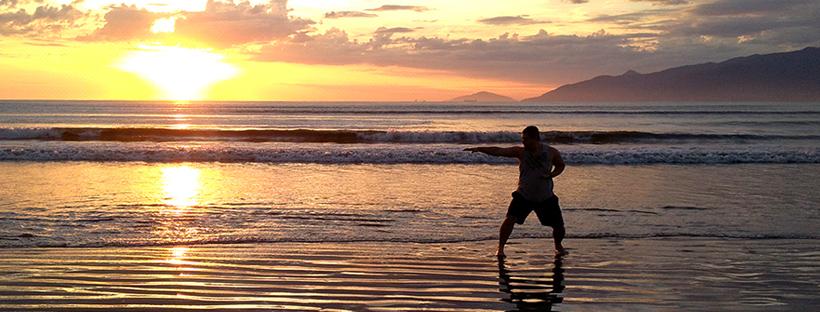When the martial art then known as Toude was developed in the ancient kingdom of Ryukyu, located south of Japan, there was a well-defined goal: to be an efficient method of civil self-defense. For this process to be successful, the art was polished through generations, being refined by collective intelligence until it resulted in the sophisticated technical and tactical records known as kata. This primary purpose has been described in testimonies by great masters such as Anko Itosu (“a way of avoiding injury by using the hands and feet should one by any chance be confronted by a villain or ruffian”) or Chojun Miyagi (“in the old days, the teaching policy of karate put emphasis on self-defence techniques”), among others.
Toude was not an art created primarily for physical education (you can simply create specific functional exercises for this purpose), a beautiful “Zen” philosophy (although it has always involved a certain ethic and principles) or even sport. These physical and philosophical elements came as a by-product of Toude and, in a way, enriched the art.
Time passed, Ryukyu was annexed by Japan and became the prefecture of Okinawa. The world has changed, the forms of violence have changed in scale and formats as well. Toude, previously trained with few students, behind closed doors, was adapted, introduced in schools in Okinawa and disseminated throughout the world. The old Toude was re-signified for the modern world and started to contemplate a more global aspect: the development of the human being. Thus Toude Jutsu became modern Karate-Do, incorporating rituals, developing teachings and becoming a form of Budo, modern art with philosophy inspired by the ancient samurai code.
Karate-Do still carries its techniques and tactics for self-defense in physical confrontations. But the update to modernity reinforced aspects of the art as a tool for personal growth, maintaining health and mental balance. As Chojun Miyagi defined it, then Karate is “the art we exercise mind and body for health promotion in daily life, but in case of emergency it is the art of self-defence without any weapon.”
In a way, the purpose of promoting the health of the mind and body turns out to be nothing less than another means of self-defense, of life preservation: we need to defend not only our bodies from injuries, but also from the possibility of diseases that can take advantage of a weakened and sedentary organism. “In the past, many masters of Karate have enjoyed long lives. Karate aids in developing the bones and muscles. It helps the digestion as well as the circulation, ”said Itosu. Our body also needs movement to compensate for the time we spend standing, sitting or in bad posture.
Our mind also needs self-defense. To be able to do better and face the obstacles ahead, we need to cultivate an assertive attitude, learn to remain calm, to have perspicacity, quick thinking, perseverance and resilience. All of this you find in a Karate training. You also realize that physical activity during a training session makes you lighter, more willing, helps you to abstract problems and be more focused. Evolving in Karate helps you to know yourself and explore your potential.
We need these more “internal” aspects of self-defense in Karate in our daily lives, but especially in adverse times. That’s where we need extra care to keep our health up to date and our mind balanced. So it is sad when people stop training Karate in the first difficulty: it seems that they only moved in a robotic way for a while, did not learned and did not understood Karate and its benefits.
Our body and mind need maintenance. The great advantage of Karate, in this sense, is that from a certain level of knowledge you can practice anywhere in your free time. You can establish a training routine according to your availability when you are away from the dojo, and apply on your own the “self-defense” of your health. This is confirmed by Gichin Funakoshi, the father of modern Karate: “Almost any other form of exercise (…) can be performed at any time or place as easily as Karate. (…) No specific area, equipment, or even partner are necessary, for it can be performed in a garden, living room, hallway, at any time or place that one feels the desire to practice.” Of course, you need a teacher to learn Karate, but it will be worth little if you do not assimilate what has been taught and do not use it to your advantage.
Karate has a lot of approaches and interpretations, but it certainly reveals its best side when it is an art in favor of life. A practice that helps people to live more fully, more actively and healthily, consolidating important values, in addition to protecting themselves and preventing themselves from various dangers, both internal and external. It is obviously not the only activity from which it is possible to derive these benefits, but (and I know I am suspicious to say) it is one of the richest and most fascinating. It is an art to cultivate in moments of peace and turbulent times.
Be sure to train and study Karate. This art is not in a physical space, but where there is a dedicated practitioner willing to do his best.
